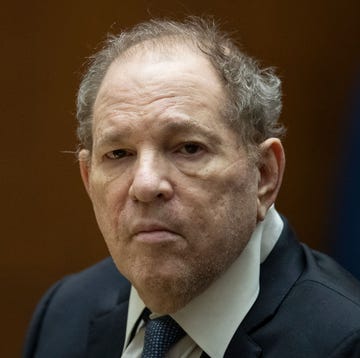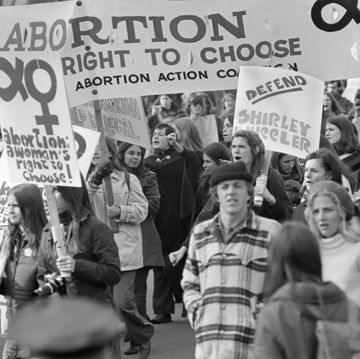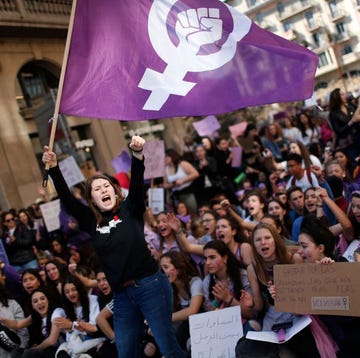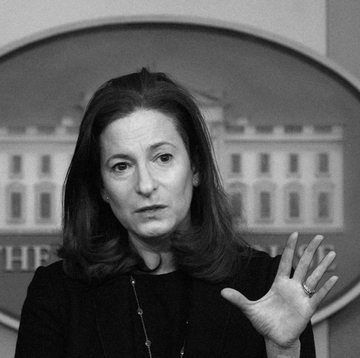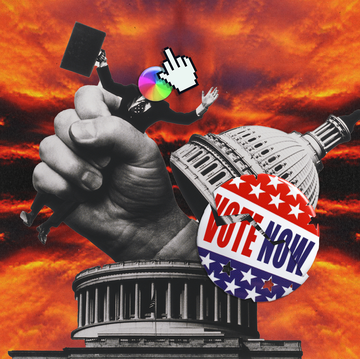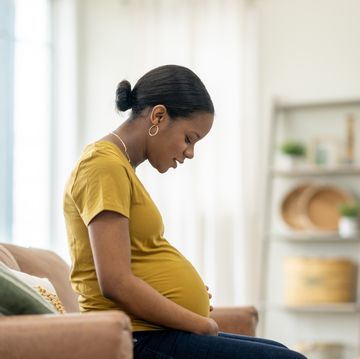Today, the Supreme Court struck down a Massachusetts law that established a 35-foot buffer zone around abortion clinics, blocking protestors from interfering with women's clinic access. Now, the question for advocates of women's health and safety is how to write laws that will protect women entering abortion clinics while still passing constitutional muster.
Massachusetts passed its buffer zone law in 2007, amending an earlier law that established a smaller buffer zone; both laws attempted to stem the violence that plagues abortion clinics. In 1994, two receptionists were killed and five others injured when a gunman opened fire in two clinics outside of Boston. Since the Roe v. Wade decision legalizing abortion in 1973, there have been thousands of acts of anti-abortion violence, ranging from murder to arson to bombings to assault.
Anti-abortion activists brought suit against the Massachusetts law, claiming it infringed on their First Amendment right to free speech. The Supreme Court agreed in a unanimous opinion.
The decision is a departure from an earlier Supreme Court case, Hill v. Colorado, which upheld a Colorado buffer zone law which stated that any person within 100 feet of a health clinic may not knowingly approach another individual to hand out "a leaflet or handbill to, display a sign to, or engage in oral protest, education, or counseling with [that] person."
The Massachusetts law initially echoed the provisions in Hill, instituting a six-foot "no approach" zone. When it was amended in 2007, though, it expanded that no-approach zone to a wider radius, categorically excluding any individuals from coming within 35 feet of an abortion clinic. The 35-foot buffer zone covered public ways and sidewalks outside the clinic, with exceptions for clinic employees and volunteers, patients, people using the sidewalk to access other facilities, and public works and safety personnel such as police officers.
The First Amendment of the United States Constitution is a broad protection of individual free speech rights from government interference. However, the government can issue restrictions on free speech if those restrictions are content-neutral, meaning they don't target a specific idea, and if the restrictions are drawn narrowly to serve a "significant government interest," and if "they leave open ample alternative channels for communication of the information" — so, for example, a city can't block a protest solely because it's being held by the Ku Klux Klan or because it's against the war in Iraq. In this case, the court found that the Massachusetts law was content-neutral — a win for those who think abortion clinic buffer zones are important — but that it was not narrowly tailored enough to stand.
The government has a significant interest in maintaining public order and ensuring access to health clinics. But the law, the Court found, burdened substantially more speech than necessary to meet those goals. Specifically, the wide buffer zone burdened "sidewalk counselors," who Chief Justice John Roberts, the author of the opinion, distinguished from mere protestors. The sidewalk counselors who brought the case, he wrote "are not protestors; seek not merely to express their opposition to abortion, but to engage in personal, caring, consensual conversations with women about various alternatives."
Women who have had abortions, clinic employees, and clinic escorts disagree with that characterization, but the court focused heavily on the importance of face-to-face interaction; the sidewalk counselors, Roberts writes, view up close and personal conversations as "essential" to their work. Restrictions on the space in which sidewalk counselors — who some clinic escorts refer to as "clinic bullies" — can approach women "have clearly taken their toll," Roberts writes. The 35-foot buffer requires counselors to raise their voices, which the counselors feel is ineffective, and they report convincing fewer women to skip their abortions since the 2007 law passed. The zones also make it more difficult for sidewalk counselors to hand out their anti-abortion literature.
But here's the good news: The Supreme Court did not invalidate buffer zones entirely. The majority opinion carefully avoids discussion of Hill v. Colorado, the earlier case upholding a more narrowly tailored buffer zone law. The concurring opinion, written by Justice Antonin Scalia, makes clear that if Scalia had his way, Hill would be thrown out, and buffer zones gone. That the majority opinion leaves that point unaddressed indicates that Hill is still good law, if weakened.
Unfortunately, the court offers little guidance as to how clinics can protect staff and patients within the bounds of this decision. It seems to indicate that states have to start with the least restrictive means possible to promote public order and ensure clinic access, and then ramp up slowly when lesser measures don't work. Laws, then, that outlaw physically blockading the entrance to a clinic are still enforceable. The court also mentions a New York City law that makes it a crime to "follow or harass" anyone within 15 feet of a clinic. But given the court's sympathetic view of sidewalk counselors, following a woman as she walks into a clinic and imploring her, "please don't kill your baby" might not count as harassment.
Even for many pro-choicers, this case wasn't an easy one. Free speech is a cornerstone to democracy, to the free exchange of ideas, and to the very idea of the United States of America. Abridgements of that speech — even speech we find repellant — cannot be made lightly. And yet the day-to-day reality at abortion clinics is that speech bleeds into violence and often comes at the expense of women exercising their fundamental right to bodily autonomy and reproductive choice.
The ACLU recognized as much in its statement about the case.
"This is a hard case and the majority opinion reflects the difficulty and importance of balancing two constitutional rights: the right of women to enter and leave abortion clinics free from the harassment, intimidation, and violence they have too often suffered in the past; and the right of peaceful protestors to express their opposition to abortion on the public streets outside abortion clinics," Steven R. Shapiro, legal director of the ACLU, said. "We agree that a fixed buffer zone imposes serious First Amendment costs, but we also think the Court underestimated the proven difficulty of protecting the constitutional rights of women seeking abortions by enforcing other laws — especially regarding harassment — outside abortion clinics. Today's opinion makes it more important than ever that the police enforce the laws that do exist that in order to ensure that women and staff can safely enter and leave abortion clinics."
The hard part comes next, as women's health advocates and clinic workers figure out how they can ensure clinic access in the face of this decision. Lower courts will surely face an onslaught of challenges to other buffer zone laws, many of which differ from the one in Massachusetts in terms of the size of the buffer zone and how it regulates protests and interaction with people entering the clinic. With no clear framework for how to balance free speech and patient safety, we're likely to see a patchwork of different rules and regulations, meaning women terminating pregnancies will have very different experiences outside of the clinic depending on their zip code.
This isn't the only buffer zone issue the court addressed recently. This time last year, the Supreme Court issued a rule reasserting its own buffer zone, which outlaws any protests, picketing, speech-making, marching, holding vigils, flying flags or banners, the wearing of political buttons or engaging in any conduct likely to draw a crowd or onlookers on the plaza outside the court. The law is necessary, the court said, to "maintain suitable order and decorum within the Supreme Court building and grounds."
RELATED:
Why Protest-Free Zones Around Abortion Clinics Are EssentialYour Unobstructed Access to Abortion Clinics Is at Stake6 Women on their Terrifying, Infuriating Encounters with Abortion Clinic ProtestersA Male Escort's Perspective: What It's Really Like Outside an Abortion Clinic
Follow Jill on Twitter.
Photo Credit: Getty Images

Jill Filipovic is a contributing writer for cosmopolitan.com. She is the author of OK Boomer, Let's Talk: How My Generation Got Left Behind and The H-Spot: The Feminist Pursuit of Happiness. A weekly CNN columnist and a contributing writer for the New York Times, she is also a lawyer.

